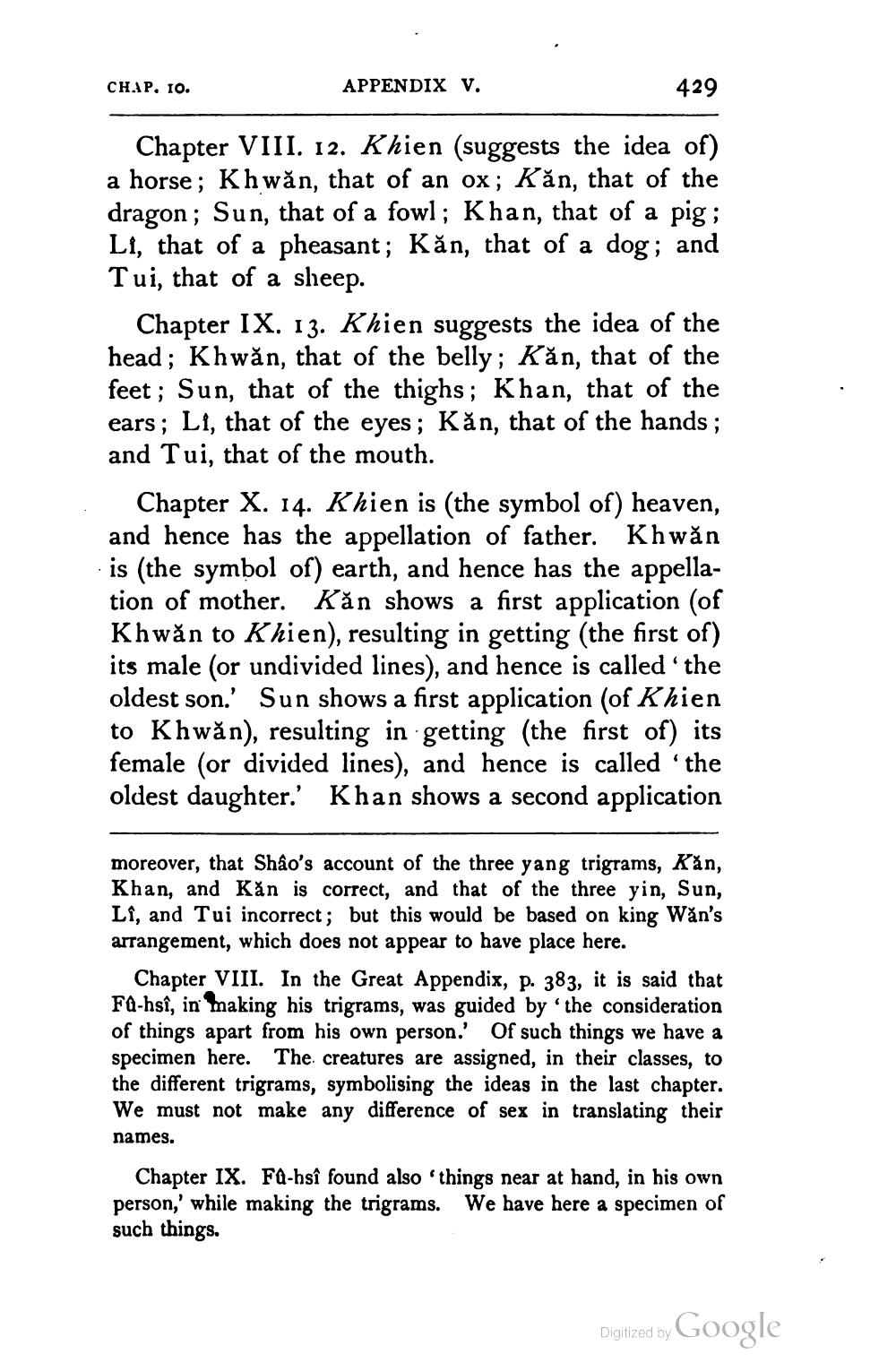________________
CHAP. 10.
APPENDIX V.
429
Chapter VIII. 12. Khien (suggests the idea of) a horse; Khwăn, that of an ox; Kăn, that of the dragon; Sun, that of a fowl; Khan, that of a pig; Li, that of a pheasant; Kăn, that of a dog; and Tui, that of a sheep.
Chapter IX. 13. Khien suggests the idea of the head; Khwăn, that of the belly; Kăn, that of the feet; Sun, that of the thighs; Khan, that of the ears; Li, that of the eyes; Kăn, that of the hands; and Tui, that of the mouth.
Chapter X. 14. Khien is (the symbol of) heaven, and hence has the appellation of father. Khwăn is (the symbol of) earth, and hence has the appellation of mother. Kăn shows a first application (of Khwăn to Khien), resulting in getting (the first of) its male (or undivided lines), and hence is called the oldest son.' Sun shows a first application (of Khien to Khwăn), resulting in getting the first of) its female (or divided lines), and hence is called 'the oldest daughter. Khan shows a second application
moreover, that Shao's account of the three yang trigrams, Kån, Khan, and Kån is correct, and that of the three yin, Sun, Li, and Tui incorrect; but this would be based on king Wăn's arrangement, which does not appear to have place here.
Chapter VIII. In the Great Appendix, p. 383, it is said that FQ-hsî, in making his trigrams, was guided by the consideration of things apart from his own person. Of such things we have a specimen here. The creatures are assigned, in their classes, to the different trigrams, symbolising the ideas in the last chapter. We must not make any difference of sex in translating their names.
Chapter IX. Fa-hsî found also things near at hand, in his own person,' while making the trigrams. We have here a specimen of such things.
Digitized by Google




